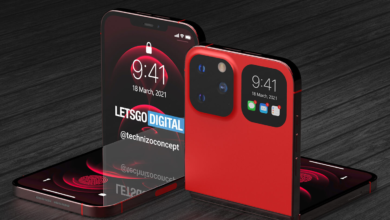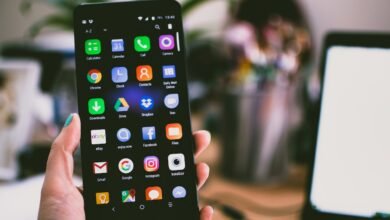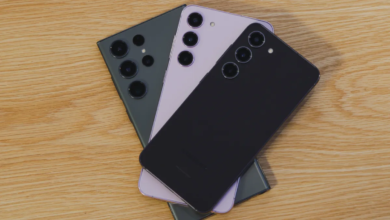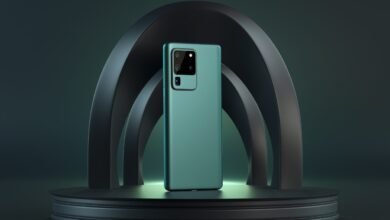7 Ways to Make Money Selling AI-Generated Art

In today’s digital age, technology continues to redefine the boundaries of creativity. One such innovation that has gained tremendous momentum is AI-generated art. Artists and entrepreneurs alike are finding ways to leverage artificial intelligence to create and sell unique pieces of art. If you’re curious about how to tap into this exciting market, here are seven ways to make money selling AI-generated art.
The art world is transforming, and AI-generated art is at the forefront of this evolution. As an artist or entrepreneur, embracing this technology can open up exciting opportunities for you. In this article, we will explore the world of AI-generated art and discover seven effective ways to monetize your creations.
Understanding AI-Generated Art
What Is AI-Generated Art?
AI-generated art, often referred to as “AI art,” is a creative expression produced with the assistance of artificial intelligence algorithms and machine learning models. These algorithms analyze vast amounts of data, often including images, texts, or other forms of input, and then generate visual or auditory art based on their analysis.
The remarkable aspect of AI art is that it can encompass a wide range of artistic forms. This can include paintings, drawings, sculptures, music, poetry, and even more experimental or abstract creations. The key feature is that AI systems autonomously produce these works, often without direct human intervention in the creative process.
The Rise of AI in Art
In recent years, the role of AI in the world of art has grown significantly. Artificial intelligence algorithms have become increasingly sophisticated, allowing machines to comprehend and replicate various artistic styles. Some AI models can even mimic the techniques of renowned artists.
This advancement in AI’s creative capabilities has attracted widespread attention and investment, revolutionizing the art world. Artists, collectors, and enthusiasts are all exploring the possibilities that AI brings to the realm of creativity.
AI-generated art challenges traditional notions of authorship, creativity, and authenticity. It blurs the line between human and machine-generated art, sparking intriguing discussions within the art community.
As AI art continues to evolve, it presents new opportunities and challenges for both artists and the art market. Whether you’re an artist looking to explore this innovative medium or an art lover curious about the future of creativity, AI-generated art is undoubtedly a trend worth exploring.
Read More: The Future of Chatbots and AI in Healthcare Software Development
Creating AI-Generated Art
Choosing the Right Tools
To start creating AI-generated art, you need access to the right tools and software. Platforms like DeepDream, Runway ML, and AI Painter offer various features to experiment with and unleash your creativity.
Training Your AI Model
You can personalize your AI model by training it on specific data and styles. This allows you to create art that reflects your unique vision and preferences.
Experimentation and Iteration
Creating AI art is an iterative process. Don’t be afraid to experiment with different inputs, parameters, and styles until you find your artistic voice.
Building an Online Presence
Creating a Portfolio Website
One of the foundational steps in establishing yourself as an AI art creator is to create a professional portfolio website. Your website serves as your online gallery, showcasing your AI-generated art, and your creative process, and providing a platform for potential buyers and art enthusiasts to explore your work.
Here are some key elements to consider when creating your portfolio website:
Visual Appeal: Design your website with aesthetics in mind. Choose a clean and visually pleasing layout that highlights your art.
High-Quality Images: Ensure that you display high-resolution images of your AI-generated art. This allows viewers to appreciate the details and quality of your work.
Artist Statement: Include a compelling artist statement that explains your artistic vision, your approach to AI-generated art, and what inspires you. This adds depth to your work and helps viewers connect with your creations on a personal level.
Contact Information: Make it easy for visitors to get in touch with you. Provide a dedicated contact page with clear contact information or a contact form.
Blog or Updates: Consider adding a blog or updates section where you can share your thoughts, artistic process, and any news related to your art. This can help engage your audience and build a community around your work.
Online Store: If you plan to sell your AI-generated art directly from your website, integrate an online store where visitors can browse and purchase your creations securely.
Leveraging Social Media
In addition to your portfolio website, social media platforms are powerful tools for expanding your online presence and connecting with a broader audience. Here are some tips for leveraging social media effectively:
Choose the Right Platforms: Select social media platforms that align with your target audience and the type of art you create. Instagram, Twitter, and TikTok are popular choices for artists.
Consistent Posting: Maintain a consistent posting schedule to keep your audience engaged. Share your AI-generated art, and behind-the-scenes content, and engage with your followers by responding to comments and messages.
Use Hashtags: Use relevant hashtags to increase the discoverability of your posts. Research popular art-related hashtags and incorporate them into your social media strategy.
Collaborate and Network: Collaborate with other artists, join art communities, and network with potential buyers and fellow artists. Building connections within the art world can help you gain exposure and opportunities.
Building a strong online presence takes time and effort, but it’s a vital step in gaining recognition and selling your AI-generated art to a global audience. Consistency, quality content, and engagement with your audience are key to success in the digital art landscape.
Selling Prints and Merchandise
Print-on-Demand Services
Partner with print-on-demand services to offer your AI-generated art as prints, posters, or merchandise. These services handle production, shipping, and customer service, allowing you to focus on creating.
Online Marketplaces
Join online marketplaces like Etsy and Redbubble to reach a broader audience and sell your art to art enthusiasts worldwide.
Collaborating with Traditional Artists
Fusion of AI and Human Creativity
Collaborate with traditional artists to create unique pieces that combine human creativity with AI-generated elements. This fusion can result in captivating and thought-provoking artworks.
Artificial Intelligence Art Galleries
Navigating AI Art Galleries
Participate in AI art galleries and exhibitions, both online and offline. These events offer exposure to art collectors, enthusiasts, and potential buyers.
Art Collectors and NFTs
Embracing NFTs
Explore the world of Non-Fungible Tokens (NFTs), where you can tokenize your AI-generated art. This blockchain technology provides a new way for collectors to invest in digital art.
Read More: The Influence of AI Speech Generators in 2023
Conclusion
The world of AI-generated art is a realm of endless possibilities, where creativity knows no bounds. By harnessing the power of artificial intelligence, you can create and sell unique artworks that captivate audiences worldwide. Start your journey into this exciting field and watch your art and profits flourish.
FAQs: Selling AI-Generated Art
Q1: Is AI-generated art considered “real” art?
Yes, AI-generated art is recognized as a legitimate form of artistic expression, and it has gained acceptance in the art world.
Q2: How do I protect my AI-generated art from plagiarism?
You can consider copyrighting your AI-generated art and exploring blockchain technology through NFTs for added security.
Q3: Can I sell AI-generated art on traditional art platforms?
Yes, many traditional art platforms are now open to AI-generated art, allowing you to showcase and sell your creations alongside traditional artworks.
Q4: What is the market potential for AI-generated art?
The market for AI-generated art is growing rapidly, with collectors, investors, and art enthusiasts showing increasing interest and willingness to purchase AI-generated artworks.
Q5: Are there any legal considerations when selling AI-generated art?
It’s essential to be aware of copyright laws and intellectual property rights when selling AI-generated art. Consult legal experts if needed to ensure compliance.










